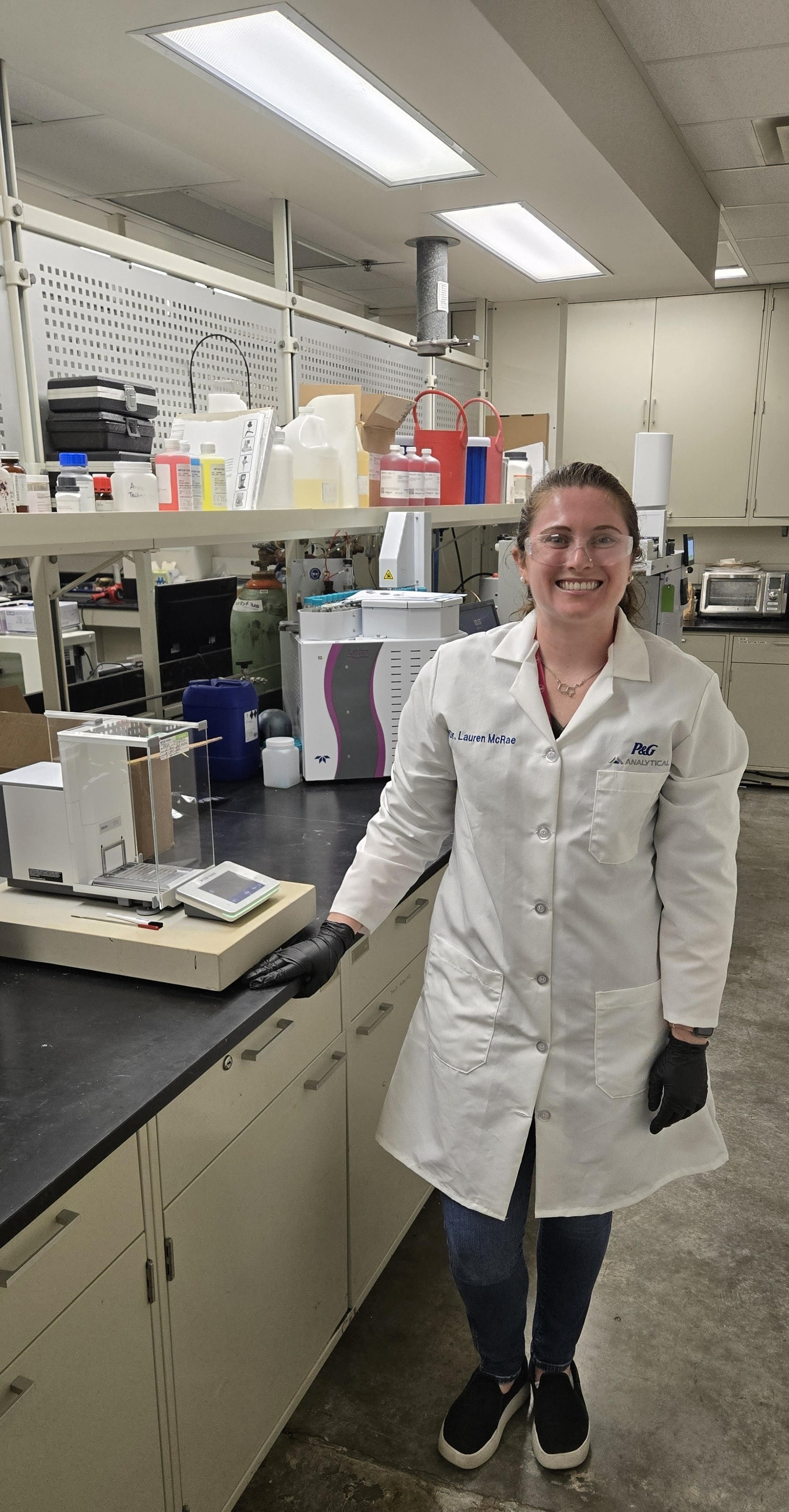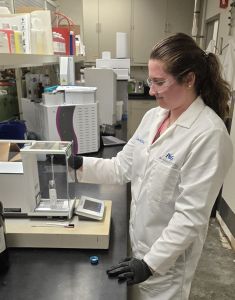UNC Chemistry Alum Turns Molecular Insights into Benefits for P&G Consumers

At P&G, Lauren McRae applies her background in chemistry and data science to optimize materials for paper products, ensuring they perform well, are cost-effective and align with consumer needs.
August 21, 2025 I By Dave DeFusco
When Lauren McRae arrived at UNC-Chapel Hill in 2018 to begin her Ph.D. in chemistry, she imagined a future where her research on sustainable materials might help shape the next generation of batteries. What she didn’t anticipate was how the problem-solving mindset that she honed in Scott Warren’s lab—learning to think independently, work creatively with data and collaborate across disciplines—would carry her into one of the world’s leading consumer goods companies.
Today, as a senior scientist in Procter & Gamble’s Baby, Feminine and Family Care Analytical division, McRae is using that same mindset to transform everyday products. She applies her background in chemistry and data science to optimize materials for paper products, ensuring they perform well, are cost-effective and align with consumer needs.
“A lot of my focus now is on technical efficiency,” said McRae. “How do we make methods more automated, feed those methods data and then use that data to generate insights that improve the consumer experience?”
McRae’s doctoral research in Carolina’s Department of Chemistry centered on crystalline phases of new materials that could serve as sustainable alternatives to lithium-ion batteries. The work demanded both computational and experimental approaches, as well as a deep commitment to turning raw data into meaningful insights.

“The type of thinking I had to do in my Ph.D.—learning how to research independently, solve problems in unique ways and analyze data efficiently—has really translated well to the challenges we face at P&G,” she said.
She credits her time in Chapel Hill not just with teaching her technical skills like coding in Python to process data, but with shaping her ability to see the big picture. Her advisor, Associate Professor Scott Warren, played an important role in that growth.
“He was really helpful in helping me understand the research, but also in helping me figure out what I wanted to do next,” said McRae. “He supported all the different things I explored inside and outside of research, and that has shaped how I now mentor others.”
McRae’s work is grounded in measurement science, or understanding how the fundamental properties of raw materials and polymers translate into product performance. Her experience with data-driven research at UNC has been central to her ability to drive innovation at P&G. In one project, she worked alongside P&G’s mass spectrometry team, which generates massive datasets that can be time-consuming to analyze. By applying computational techniques like cluster analysis and machine learning, her group uncovered molecular signatures that correlated with consumer feedback about product performance.
“In a previous project while working on hair care products, one consumer reported their hair felt softer, but it wasn’t clear which molecules were responsible,” she said. “Using computational analysis of the mass spec data, we were able to identify the molecules contributing to performance and build that insight back into product development.”
That combination of computational insight and experimental validation has become a hallmark of McRae’s approach. Whether working on biodegradable polymers, feminine pads or family care paper products, she emphasizes the importance of linking raw data to consumer experience.
In her role with paper products, McRae’s expertise lies in polymer characterization—understanding how chemical and physical properties affect how a product performs in real life. The challenge, she said, is to connect every stage of the process: how the raw material is made, how it performs in production and how it ultimately feels to the consumer.
“The most unique and interesting challenge is predicting the consumer experience from the raw material,” she said. “If we can understand the fundamental chemical properties up front, we can innovate more efficiently and in ways that help us identify meaningful solutions much faster.”
Whether McRae is analyzing polymers for biodegradability or helping design baby and family care products, she sees science as a means to improve daily life.
“There are tons of technical pieces that go into making a product, but ultimately, the singular goal for everyone here is to make the consumer experience better,” she said. “That’s what drives us.”

